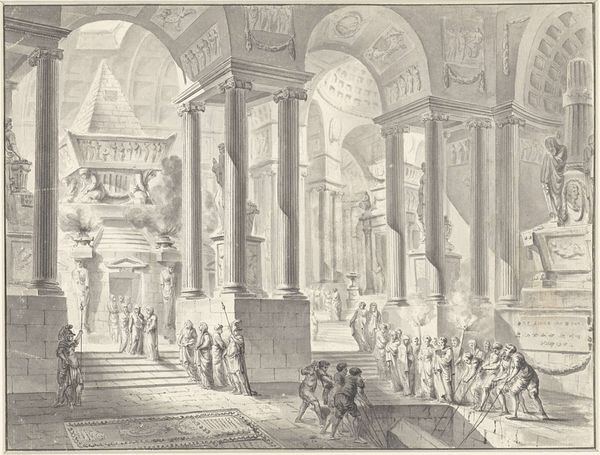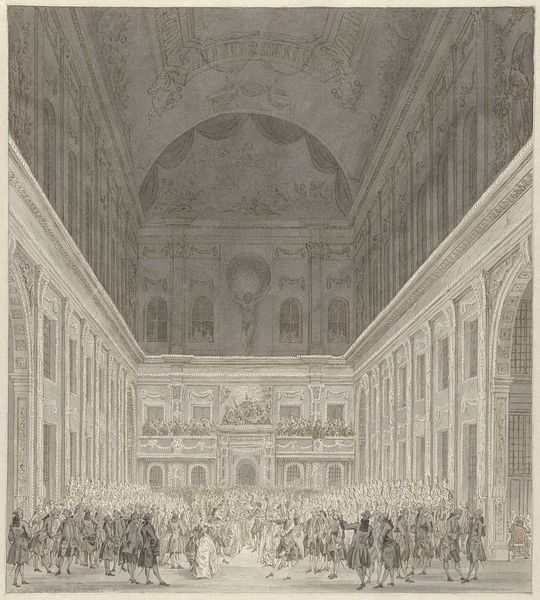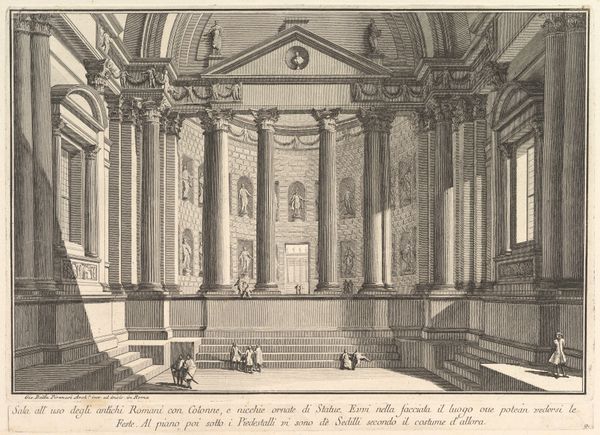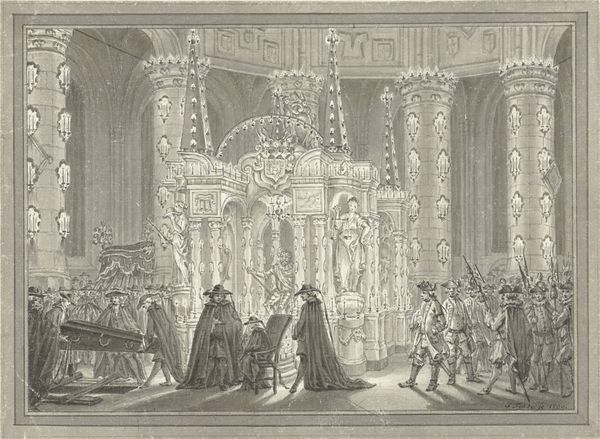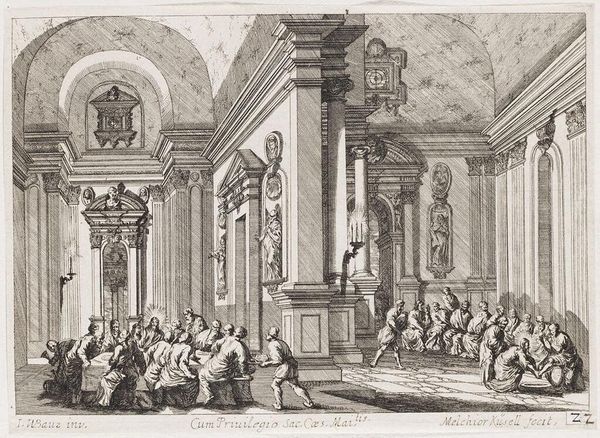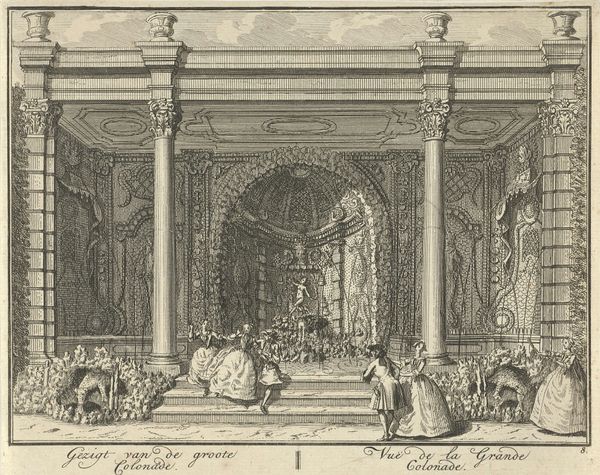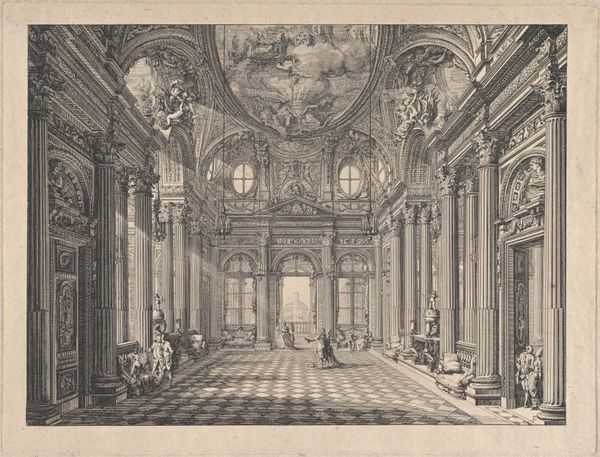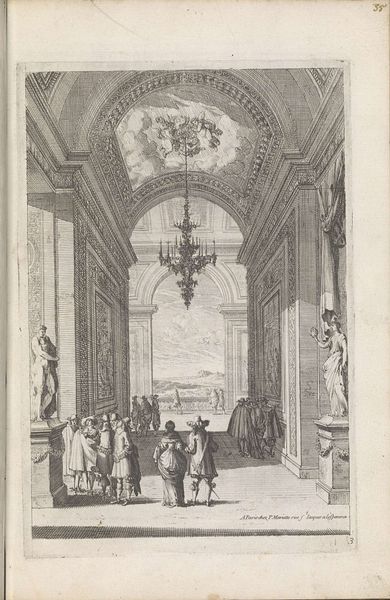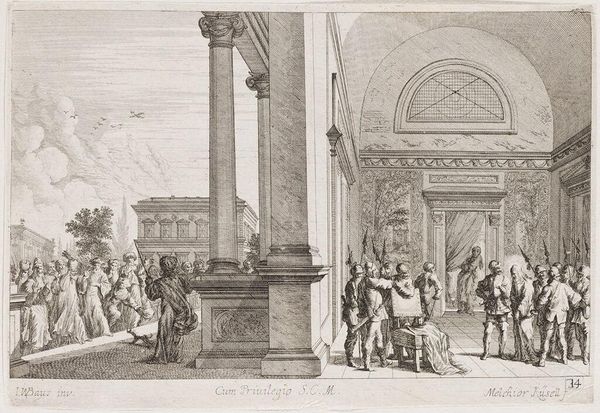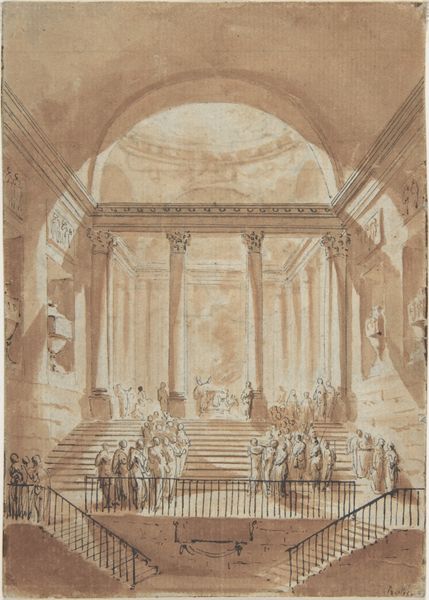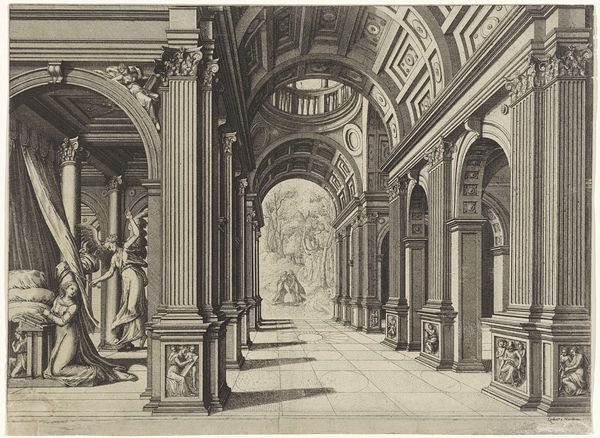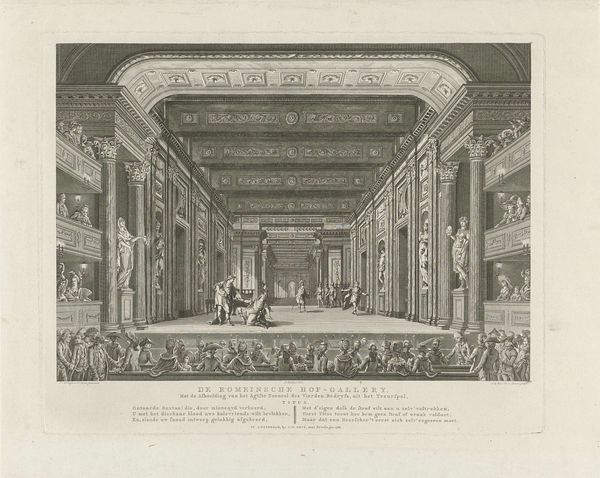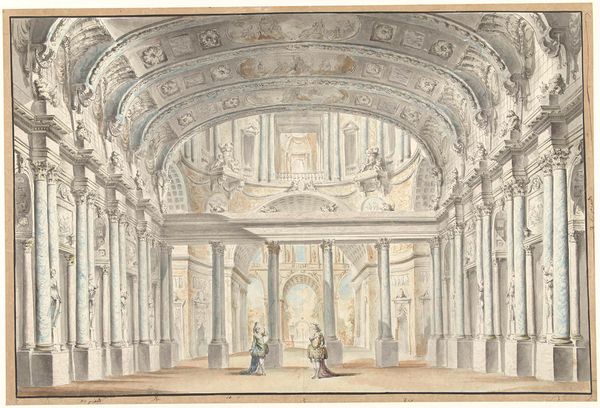
drawing, ink, pencil, architecture
#
architectural sketch
#
drawing
#
quirky sketch
#
baroque
#
mechanical pen drawing
#
pencil sketch
#
sketch book
#
perspective
#
personal sketchbook
#
ink
#
sketchwork
#
geometric
#
pen-ink sketch
#
pencil
#
cityscape
#
storyboard and sketchbook work
#
pencil art
#
architecture
Dimensions: height 224 mm, width 297 mm
Copyright: Rijks Museum: Open Domain
Curator: Welcome. We're looking at "Interieur van een koepelkerk," or "Interior of a domed church," a drawing in ink and pencil attributed to Jacques François Blondel, likely created sometime between 1715 and 1774. Curator: It’s instantly striking – a symphony of lines and light. The sheer verticality, the overwhelming scale… it's all designed to create a sense of awe and submission. Curator: Submission is a key word. Blondel was working in the era of absolute monarchies and deeply ingrained social hierarchies. Grand architectural spaces were powerful tools to convey authority and reinforce the prevailing power structures of the time. Churches, in particular, were arenas for the performance of social control. Curator: Absolutely. Consider how Blondel uses perspective, drawing our eye upwards towards that distant oculus. It visually elevates the spiritual realm. The classical columns and ornate detailing evoke Roman grandeur, further amplifying that sense of established power and order. Curator: Right, and how does this grandeur impact the everyday person depicted? Look at the figures; they appear almost insignificant compared to the architectural immensity. Many are kneeling. The work reflects a society where one’s place – both physical and social – was clearly defined, and deference to authority was expected. Curator: Yet, even within that framework, there's an intriguing contrast. Notice the subtle asymmetry, the variations in the column spacing. It avoids sterile perfection, suggesting a human hand in its creation, not just divine design. The play of light and shadow across the surfaces adds depth and a tactile quality to the cool geometry. Curator: I think that human hand also tells of a complex interplay of labour. While Blondel's signature denotes the artist's vision, we should remember the countless artisans whose work enabled this vision, people often erased from art historical narratives. The work of designing these monumental projects occurred on the backs of anonymous and racialized work. Curator: A point well taken. Seeing beyond the immediate aesthetic experience leads us to fuller comprehension. Thanks, that’s certainly made me consider my initial assumptions. Curator: Likewise. By teasing out these multiple layers of meaning and context, the artwork evolves from static beauty to a poignant visual document, relevant to modern discourse.
Comments
No comments
Be the first to comment and join the conversation on the ultimate creative platform.
